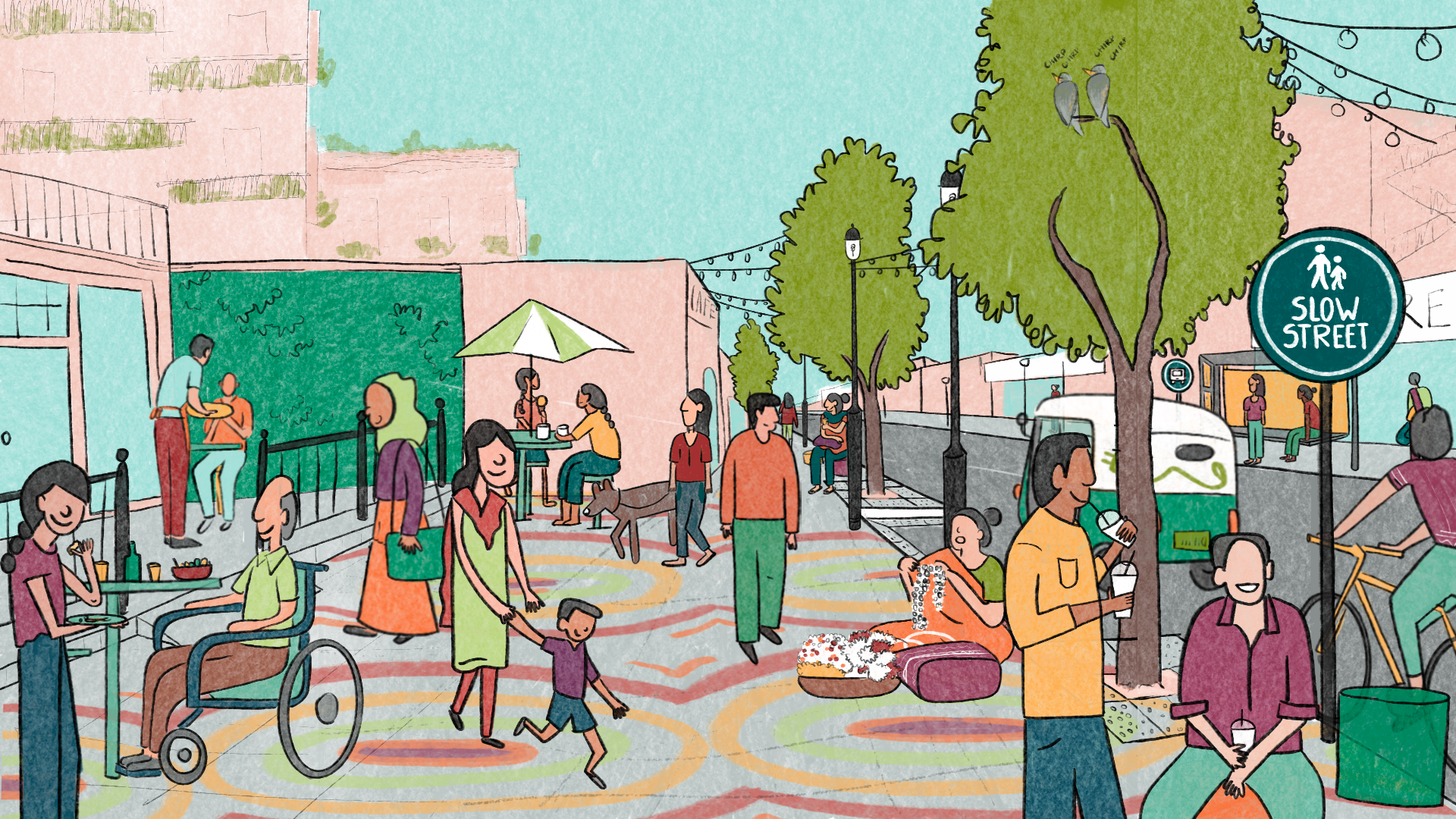In Indian cities, over two-thirds of trips are by walk, cycle, or public transport, but people using these modes are forced to navigate unsafe streets primarily designed for cars. Tragically, over 1.3 lakh people died in road crashes in 2020. One in five was a pedestrian or a cyclist—the two most vulnerable groups.
We believe that creating Healthy Streets—streets that prioritise walking, cycling, and access to public transport—will not only improve road safety but also reduce greenhouse gas emissions, improve access to economic opportunities, and create a people-friendly city for all.
What we do
ITDP India works at the national, state, and city level to support Indian cities to plan and implement high-quality Healthy Street projects through the creation of street design guidelines, developing standards, and building the capacity of city leaders.
With support from ITDP India, cities like Chennai and Pune have been pioneers leading the transformation with hundreds of kilometres of transformed streets over the years, serving as a role model for cities across the country. Both cities have adopted supportive policies, developed street design guidelines, and launched ambitious street design programmes to transform streets across the city.
It was crucial to build on and learn from the efforts of these cities and scale these lessons to other cities across the country. We supported the Smart Cities Mission to develop a toolkit to guide all 100 Smart Cities to create better streets. Since 2020, through two national initiatives launched in collaboration with the Mission—the India Cycles4Change and Streets4People Challenges—ITDP India has trained city officials from over 100 cities in planning and implementing Healthy Streets. Through the Challenges, 33 cities have implemented over 570 km of walking and cycling projects, and over 1400 km are underway in 48 cities.
Cities have also adopted policies and created institutional frameworks to accelerate the creation of Healthy Streets. 15 cities have adopted Healthy Streets Policies, with 17 more in the process of adopting similar policies. 33 cities have established Healthy Streets Apex Committees and 19 cities have set up Healthy Streets Design Cells.
We aim to catalyse the transformation of streets across all Indian cities into Healthy Streets that are safe, accessible, and inclusive for everyone.















